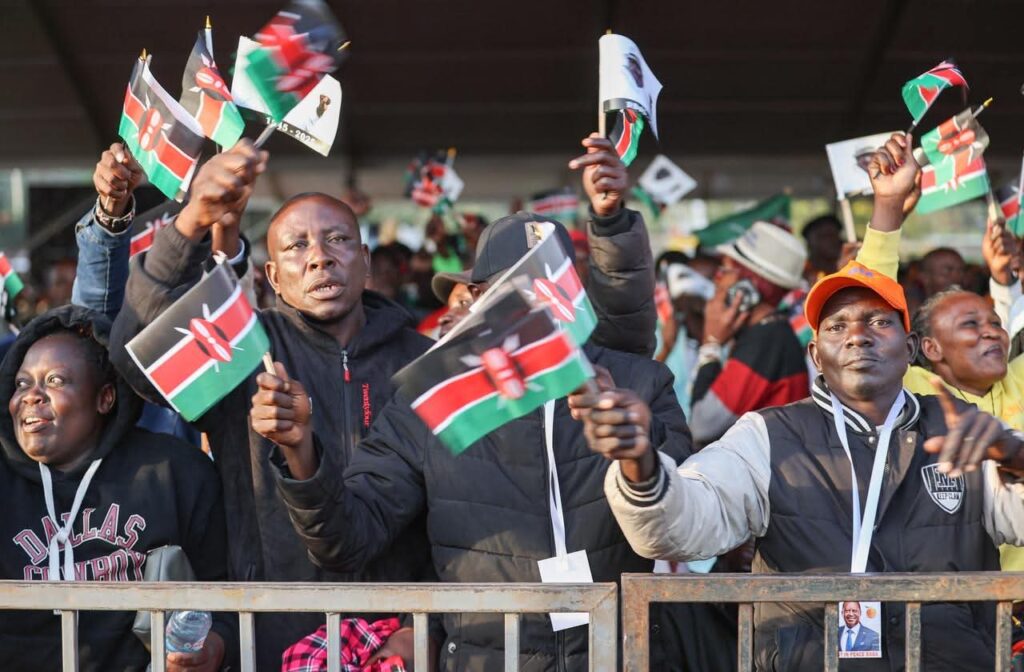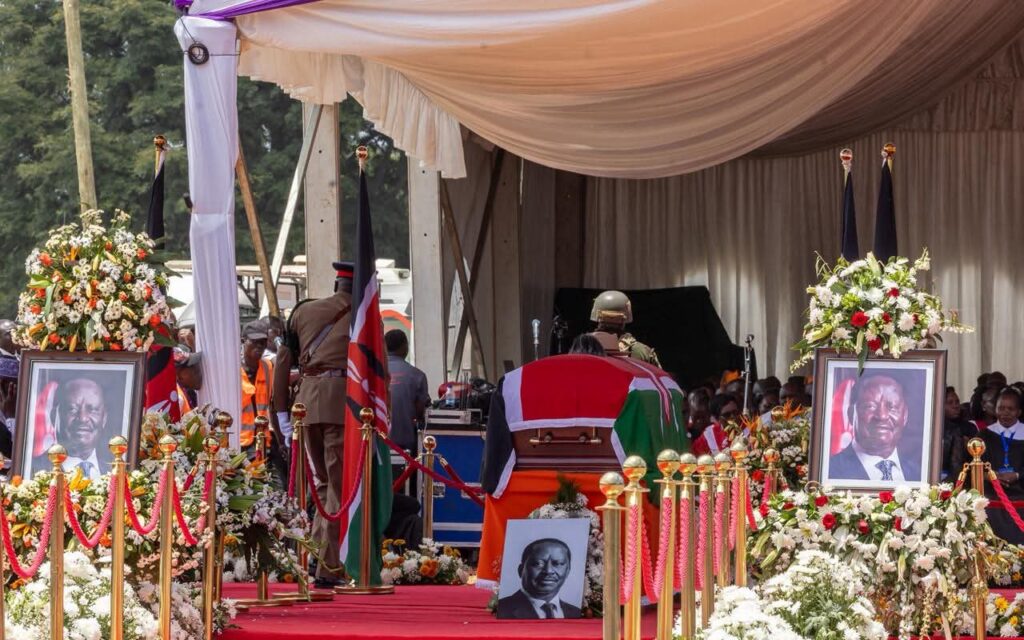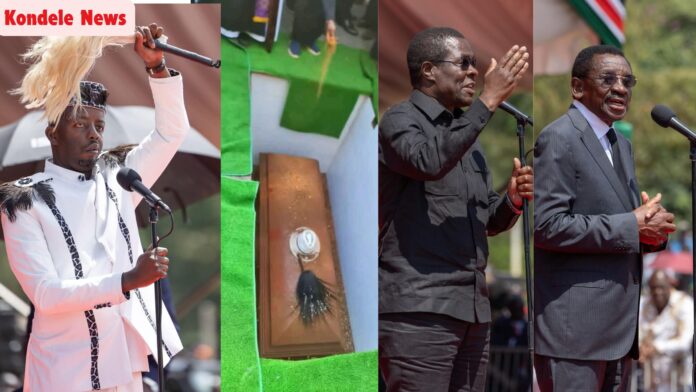By AUSTINE OGOLLA -THE POLITICAL BAROMETER:
When the soil finally covered Raila Amolo Odinga’s grave on Sunday October 19, it was not just a political titan being laid to rest; it was the burial of a generation’s hopes, struggles, and identity.
Laid beside him were two powerful symbols of his political reign: his signature hat and the fly whisk that for decades had become extensions of his public persona.
For many, those items represented authority, wisdom, and the mystique of a people’s king.
The hat, always tilted slightly to the side, had become a crown of defiance. The fly whisk, waved at rallies from Kibera to Kisumu, evoked the imagery of an elder statesman commanding loyalty and respect.

Together, they captured the spirit of a man who stood tall against injustice and embodied Kenya’s long struggle for democracy.
That these relics were buried with him speaks volumes. It reflects not only the closing of a remarkable political life, but also the enormity of the vacuum he leaves behind and the absence of a clear heir to his throne.
In Kenyan politics, succession is rarely ceremonial; it is earned through charisma, conviction, and an unbreakable bond with the people. Yet the burial of Raila’s hat and whisk feels like the sealing of an era—the quiet end of a kingdom without an immediate king.
Among the Luo community, from which Raila hailed, leadership carries deep traditional symbolism. The fly whisk, orengo, is not merely a prop but a sacred emblem of authority and wisdom, often held by elders or community leaders. The hat, too, has over time come to represent dignity and power. In being buried with these items, Raila was honored not only as a statesman but as a true Luo elder, one whose political and cultural stature transcended generations.
For over three decades, Raila was more than a politician; he was a movement. He unified tribes around causes, gave hope to the oppressed, and provided a platform for the voiceless.

His followers did not rally behind him for convenience; they followed him because he fought. That emotional and moral connection cannot be passed down through blood or party machinery; it must be rekindled through sacrifice, courage, and consistency.
As names like Raila Junior, Opiyo Wandayi, and Babu Owino surface in succession debates, it is evident that inheriting Raila’s mantle will require more than lineage or party loyalty.
The people who stood with Raila through tear gas, detentions, and heartbreak will not be moved by slogans. They will look for conviction; a leader who can feel their pain, articulate their dreams, and defend their dignity.
The burial of his symbolic regalia marks the beginning of a difficult transition. The tools that once electrified crowds now lie still beneath the soil of Bondo, awaiting a generation ready to carry their spirit in new forms.
Raila’s political base remains vast, passionate, and deeply emotional, but it is also searching for authenticity in a time when politics feels transactional.
The post-Raila era will test Kenya’s opposition politics like never before. The ideals he championed; justice, equity, and unity, remain alive, but the man who gave them voice is gone. The question is no longer who will replace him, but who will rise with the same courage to continue what he began.
For now, the hat and the fly whisk rest with him; silent, dignified symbols of a Luo son who became a national icon and carried the weight of a people’s hope. And with them lies the undisputed crown of Kenya’s opposition politics, awaiting whoever dares to earn it.
Note: Kondele News Welcomes topical opinions on politics, climate change, business, Agriculture, Health among others, feel free to present your article at info@kondelenews.co.ke

